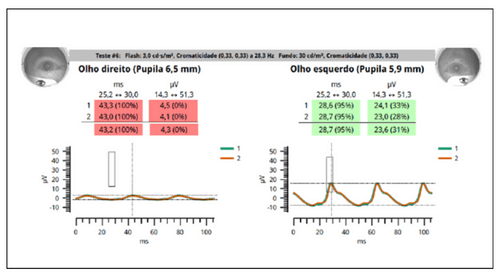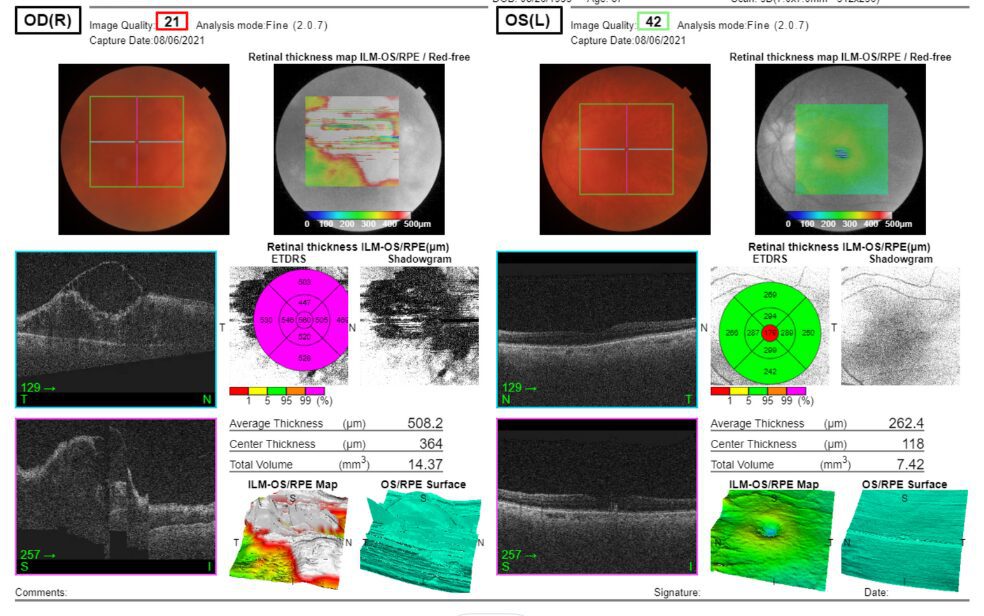Estudo de Caso
Avaliação de Risco para CRVO baseado em ERG
by Patrícia de Freitas Dotto, MD, PhD,
Dr. Jeser Amarante Faria Children’s Hospital, Joinville - Brazil
A paciente, mulher, 87 anos, procurou ajuda médica devido à perda gradual da visão. Ela apresentava o histórico de dois meses com visão turva no OD, catarata densa e 20/200 de acuidade visual (BCVA). Após exames , ela foi diagnosticada com oclusão da veia central da retina (CRVO) com edema difuso.

Por que o exame ERG foi realizado?
Image quality was borderline low through the cataract, yet we needed to evaluate disease severity more closely in order to determine whether the condition was ischemic or non-ischemic and to assess the patient’s risk of developing rubeosis iridis. A quickly to conduct flicker ERG test can indicate if CRVO is ischemic or non-ischemic and help assess risks and complications associated with CRVO. [59]
Dispositivo RETeval ERG/PEV revolucionário

Quais foram as descobertas do ERG?
Os resultados do flicker ERG revelaram tempo implícito significativamente atrasado e baixa amplitude no olho afetado, bem como uma grande diferença entre olhos. Em suma, estes resultados indicaram que o paciente tem CRVO isquêmica e apresenta alto risco de evoluir para rubeose da íris.
How did ERG influence the patient’s care?
The patient underwent cataract surgery with vitrectomy as well as panretinal photocoagulation (PRP) treatment to avoid progression to rubeosis. The patient now has a stable retinal appearance and no change in best corrected visual acuity (BCVA) of the affected eye. ERG helped us evaluate the severity of CRVO when image quality was low due to a dense cataract.
Conclusão
The dense cataract negatively influenced image quality, impacting our ability to provide an accurate assessment. An ERG test can be successfully completed even if media opacities are present. In this case, ERG played a crucial role in identifying the ischemic nature of CRVO and predicting the patient’s high risk of developing rubeosis iridis.


Patrícia de Freitas Dotto
Hospital Infantil Jeser Amarante Faria – Joinville, Santa Catarina- Brazil
Dr. Patrícia de Freitas Dotto has dedicated a large part of her life to ophthalmology and clinical research along with participating in a visual electrophysiology scholarship program at Escola Paulista de Medicina – Federal University of São Paulo. Dra. Patricia’s expertise in electrophysiology guided the subsequent assessment and management of this complex case.



